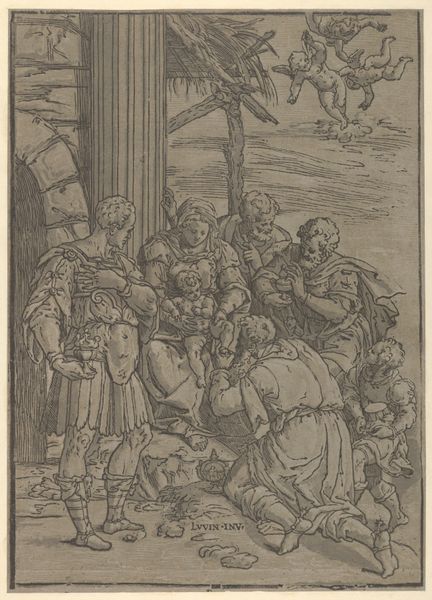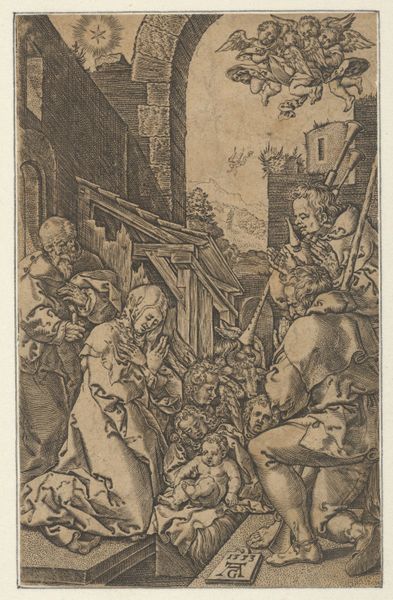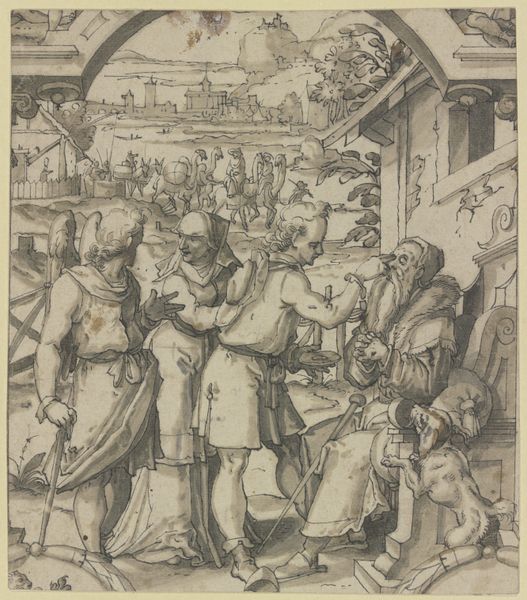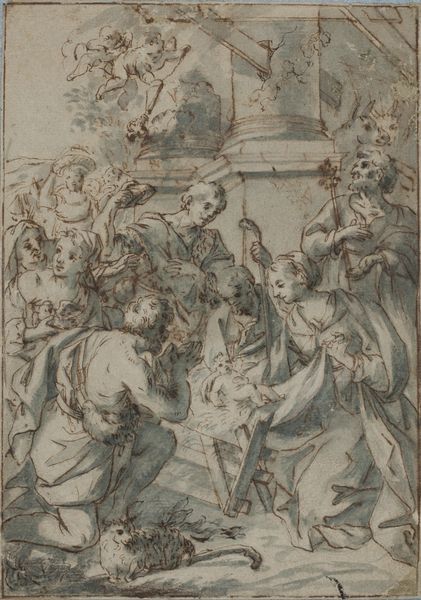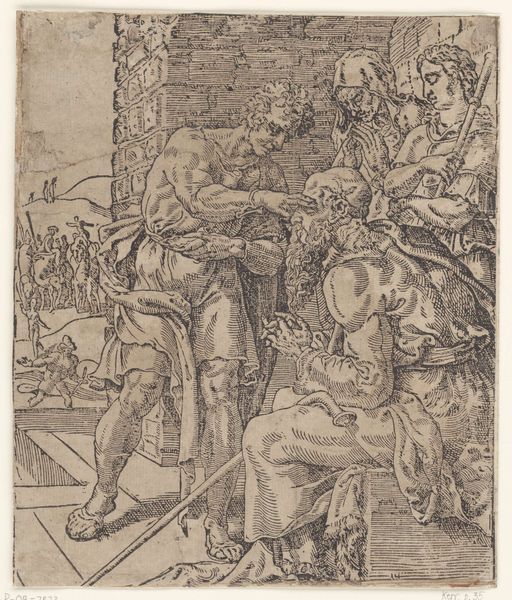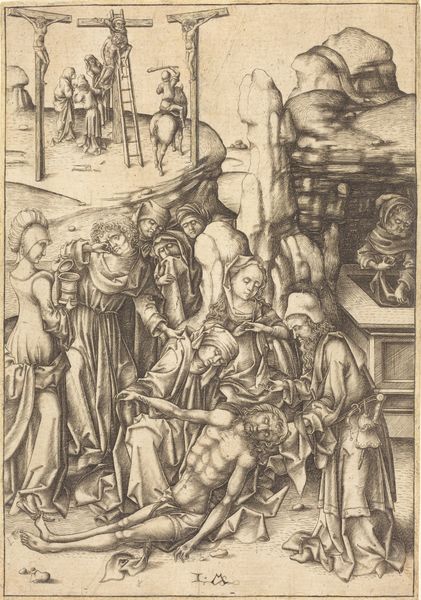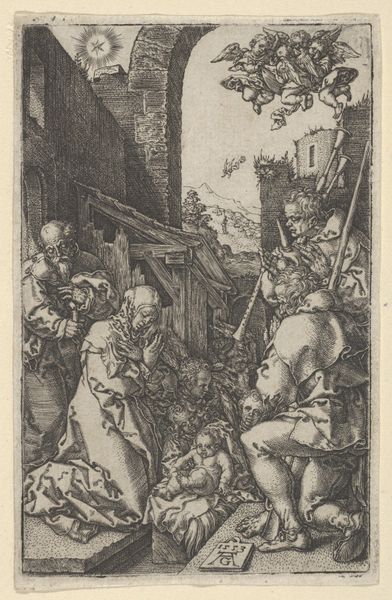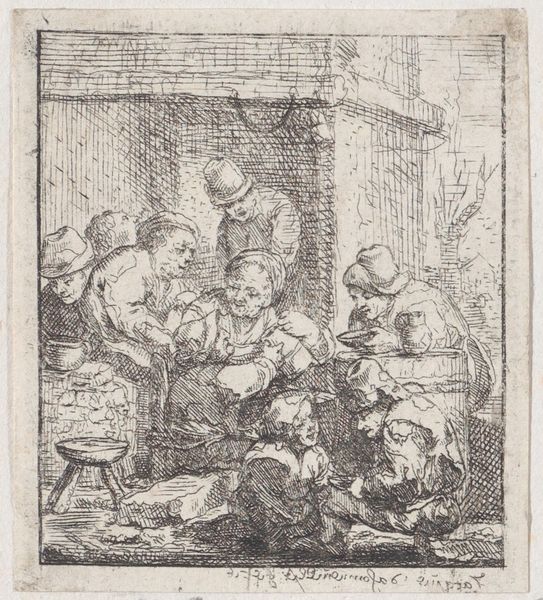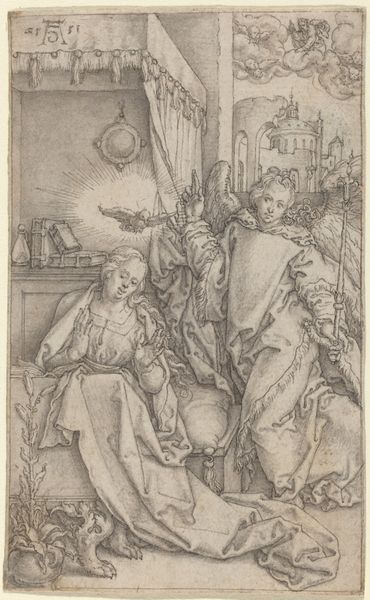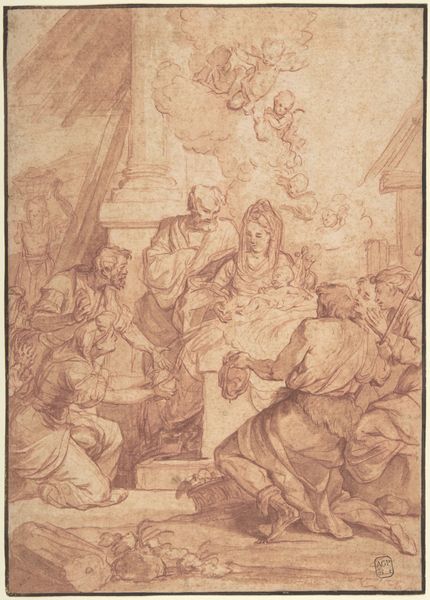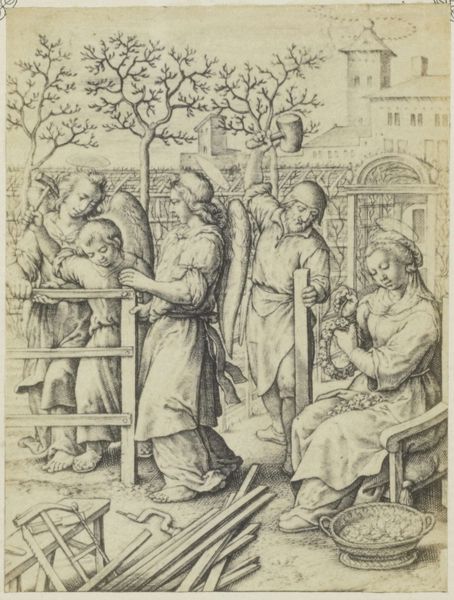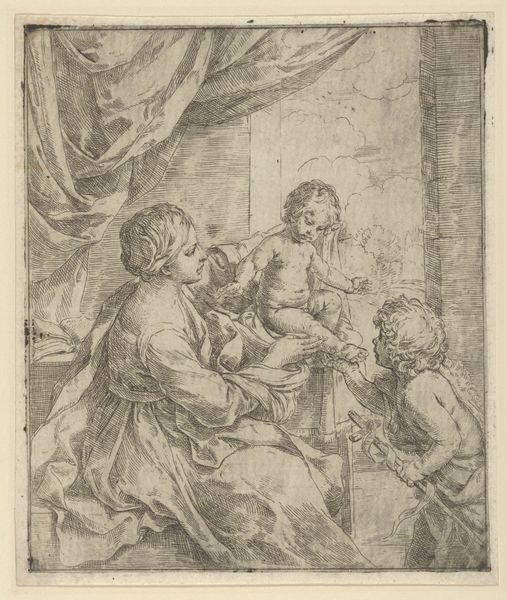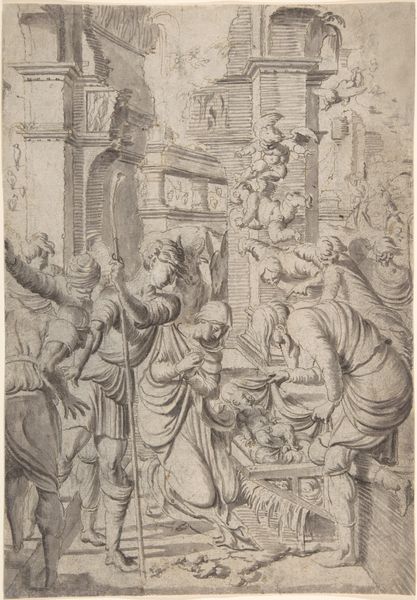
drawing, print, paper, ink, engraving
#
drawing
#
narrative-art
# print
#
figuration
#
paper
#
ink
#
coloured pencil
#
northern-renaissance
#
engraving
Dimensions: overall: 10.8 x 6.9 cm (4 1/4 x 2 11/16 in.)
Copyright: National Gallery of Art: CC0 1.0
Editor: Here we have Heinrich Aldegrever's "The Nativity" from 1552, rendered in ink on paper through engraving. The texture looks incredibly detailed. What catches my eye is the almost casual depiction of what I expect to be a very grand event. What do you make of it? Curator: It's interesting to consider this piece from the perspective of artistic production in 16th-century Germany. Look closely at the lines – they are meticulously engraved. This isn’t just about illustrating a religious narrative; it's about skill, labor, and the rise of printmaking as a powerful means of disseminating images and ideas. The material process itself becomes part of the artwork's message. Consider, who was the intended audience for such prints? Editor: So it's not just the "what" but the "how" that's important? Were these prints for the wealthy, or did they reach a wider audience? Curator: Precisely. Printmaking democratized image consumption. These engravings, reproduced and distributed, became commodities. Aldegrever, like many Northern Renaissance artists, blurred the lines between artisan and artist, between religious devotion and market demand. How does the setting, the architecture, for instance, reflect this intersection of the sacred and the mundane? Editor: I see your point. It’s not set in a majestic temple but almost like a village scene. The figures aren’t idealized either; they're quite ordinary-looking people. The inclusion of everyday objects gives it a very earthly feel. Curator: Exactly. The Nativity isn't just a divine miracle here. It's an event made accessible through the materials of everyday life – the ink, the paper, the very process of reproduction. These details anchor the scene to a specific place and time, reflecting local material culture. Editor: This makes me think about the power of reproducible art and its impact on spreading narratives. It makes one reconsider not only the artistry behind the image but also the system of production that enables it. Curator: Indeed, understanding the material conditions reveals the multiple layers of meaning embedded within.
Comments
No comments
Be the first to comment and join the conversation on the ultimate creative platform.
